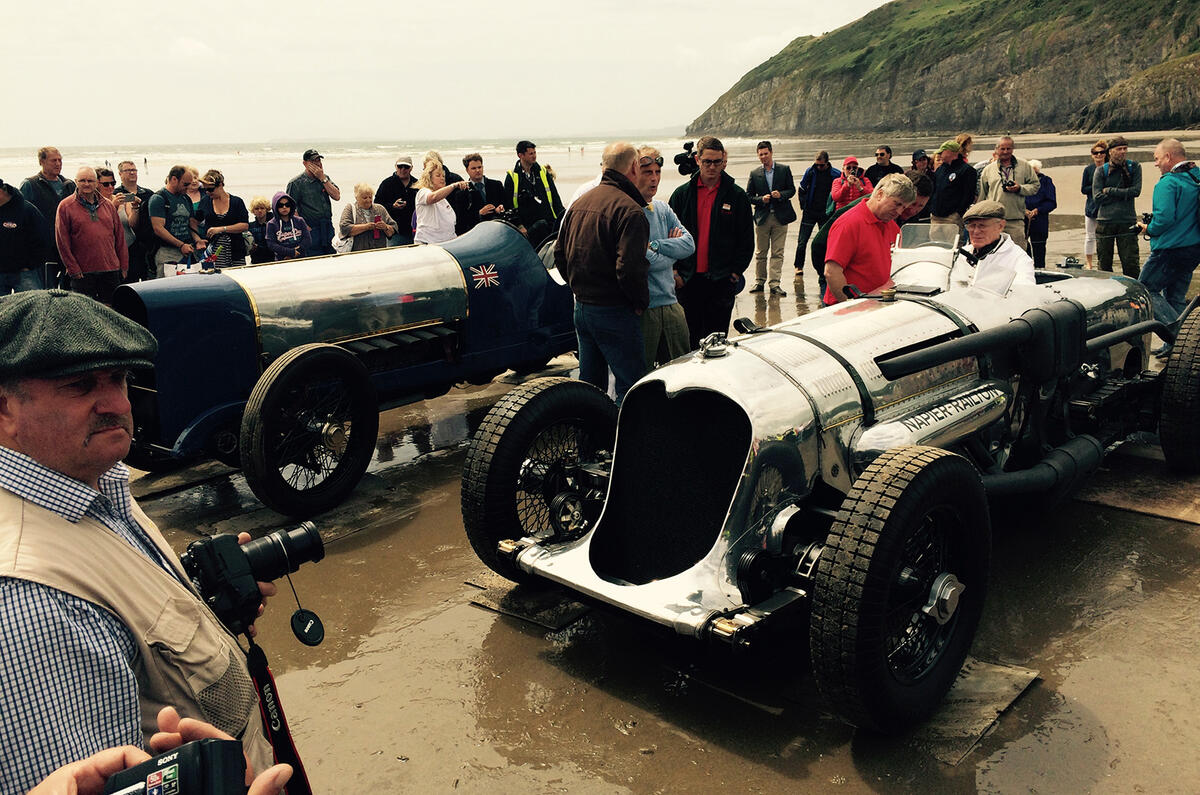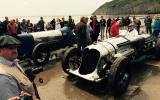The uncanny thing was just how much Don Wales, sitting behind the wheel of the original Bluebird land speed record car, looked like his grandfather Sir Malcolm Campbell, who had set a world land speed record of 150mph in the machine, exactly 90 years before.
It just so happens that I have a large photograph of Campbell on one of the walls at home, so I could see the resemblance straight away.
Sure, Wales dyed his hair to the mid-brown of Sir Malcolm’s barnet, and adopted Sir Malcolm’s characteristic sky-blue jumper, breeks and brown shoes for the day. But there was no mistaking the shape of the head, or close resemblance in the eyes and nose, or his adoption of the original speed king’s penchant for taking charge.
Yesterday, on the beach at Pendine Sands, where Campbell set his original record, Wales allotted tasks to willing helpers, who soon set about laying out the course, putting up crowd barriers and a start-line banner just like the one that had been there in 1925.
The car, fresh from an exhaustive rebuild by its owner, the National Motor Museum at Beaulieu, looked magnificent, and sounded even better when they started its 18.3-litre V12 Sunbeam engine, a unique cross between a car and an aero engine.
This 350bhp Sunbeam car - for which the Bluebird name was originally coined - first set a new land speed record of 138mph in 1922, then pushed it through the 150mph barrier right here, 90 years ago.
To keep Bluebird company, the Brooklands Museum brought its equally magnificent 24-litre Napier-Railton record car, the all-time banked circuit record-holder in the hands of another speed king, John Cobb, whose dislike of Campbell was rumoured to be intense back in the day, though the crews of the two cars seemed to be getting on pretty well yesterday.
Pendine Sands was packed yesterday with enthusiasts and tourists, attracted by publicity on radio and TV and by an offer from the local council to park their cars on the beach for £3 a throw.
Given the crowds, plus the fact that nowadays the beach is part-occupied by the army for a firing range, speeds for the re-run were kept to around 50mph and the course was considerably shorter than the original. But when those engines got started, their stub-exhausts belching flame as well as noise, and when Wales slipped on his speed king’s goggles, the only protection against the elements his grandfather deemed necessary, we were all transported back 90 years to simpler, grander days. It was marvellous.



















Join the debate
Add your comment
Was it on, Antiques Road show
@ Steve Cropley
The atmosphere must have been great!